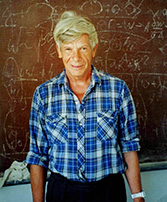Speaker
Description
Using a simple model of self-organized criticality, we study interplay between intrinsic dynamics and external disturbances that affects the resulting critical behaviour. The model is Hwa-Kardar “running sandpile” that is a stochastic equation for a coarse-grained field that describes evolution of anisotropic system [Phys. Rev. Lett. 62, 1813 (1989); Phys. Rev. A 45, 7002 (1992)]. Using the Martin-Siggia-Rose-Janssen-de Dominicis formalism, we cast the equation into a field theory that can then be studied with the renormalization group analysis. The latter allows one to explore critical points that determine universality classes and related critical exponents. The model is augmented by addition of random motion of the environment modelled by Gaussian velocity ensembles or by the Navier-Stokes stochastic equation. While chaotic external flows are known to dramatically affect critical behaviour, we found that it is a contest between strongly anisotropic intrinsic dynamics and isotropic external disturbances that produce the most interesting results. Isotropic flow may “wash away” the anisotropy of the system altogether but surprisingly it does not always preclude the restoration of original strong anisotropy via highly nontrivial mechanism. New crossover universality class can also appear where the anisotropy survives, but becomes “weakened” in a sense that there is no longer two independent dimensions corresponding to different directions. Anisotropic flow, on the other hand, brings interesting results when Hwa-Kardar model is altered to include a columnar (time-independent or spatially quenched) random noise instead of the white noise. Fixed points in this case turn out to have overlapping stability regions; the situation may be interpreted as a universality violation. It is especially interesting that the same model without external flow does not predict this.

